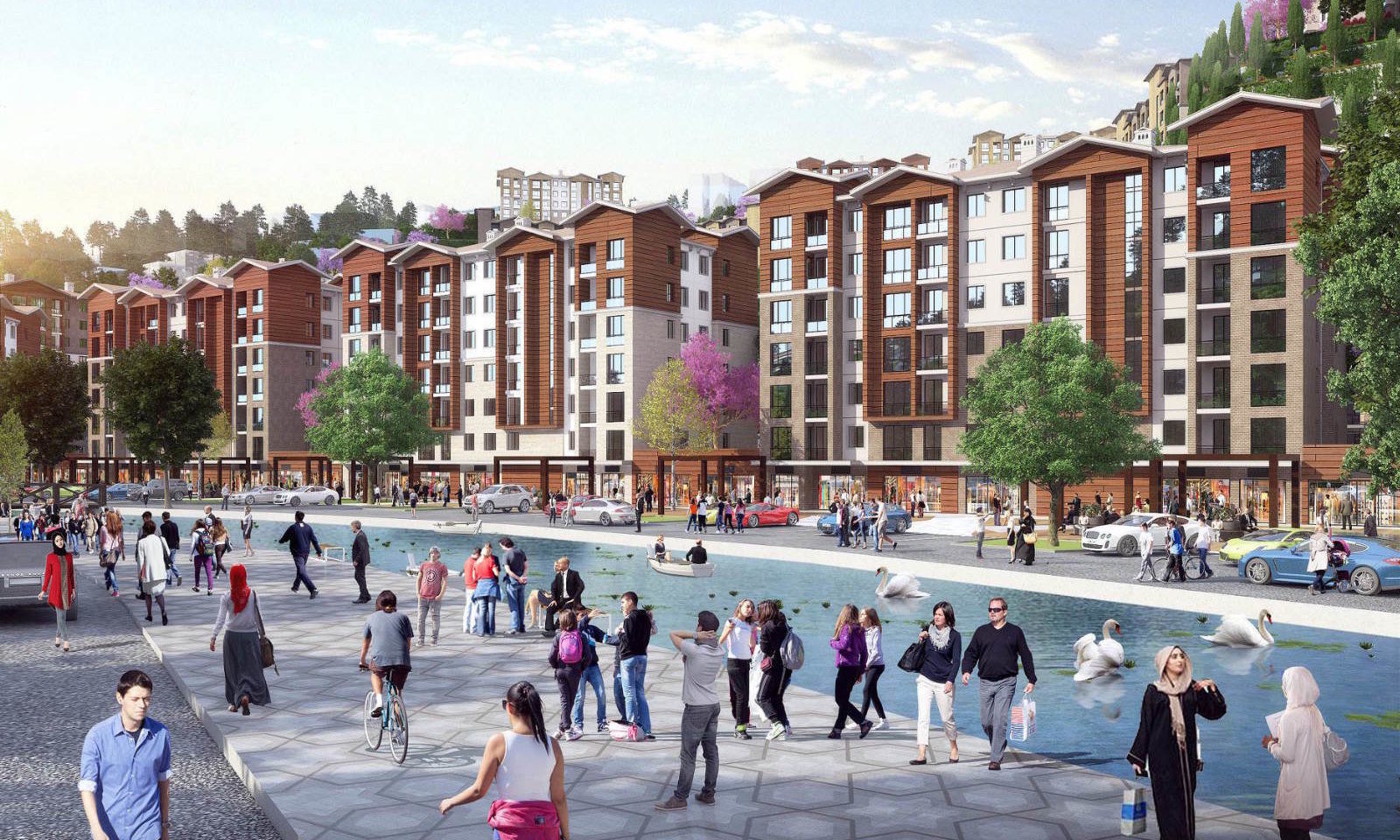Turkey’s industrialisation process during the 20th century also resulted in the rapid development of cities. For instance, Istanbul’s population increased from one million people in 1950 to 5 million in 1980 and 14 million in 2014. This growth led to the emergence of what is known as gecekondus, a structure built illegally by an individual on public or private land, in this case, normally on the outskirts of cities.It is estimated that around 80% of the properties in Turkey do not have an occupancy permit and 25% are illegal. This is particularly remarkable in Istanbul, where the number of illegal settlements stands at 60%.There are various reasons behind this phenomenon. The main effect is that the neighbourhoods in these cities do not follow any type of structure and therefore, they have insufficient services. Various governments have tried to find a solution to this problem, by basically following two options: to demolish the gecekondus (which did not work for political, social and economic reasons) or to legalise them, which led to the inhabitants believing that it was simply an enrichment tool.All this changed after Turkey’s devastating earthquake in 1999. After this natural disaster, the Turkish authorities initiated the implementation of the legal and institutional framework to rebuild the area, which led to the Urban Regeneration Law of 2012, which in turn, led to the quick acceleration of the urban regeneration process with the aim of building sustainable cities, capable of withstanding disasters.
Gaziosmanpa?a, a clear example of this new construction
The aim of this new model is for new cities to be more “impartial” and for benefits to be distributed more evenly. Therefore, the “Value-based method” was developed, which has pleased both participants and the private sector in terms of the regeneration activities.One of the places in which this type of reconstruction has been most successful is Gaziosmanpa?a, one of the most populous districts in Istanbul. It is located close to the city centre and has good connections to the city’s network of motorways and the Bosporus Bridges. It has a young population, but with a low level of education.More specifically, the urban regeneration activities were carried out in 37% of the district’s area. Those living in Gaziosmanpa?a were actively involved in all processes of the project. Local authorities are responsible for managing the urban regeneration process and for establishing the relationship between inhabitants and investors, who regenerate the urban areas with the comments of the public and local authorities during the urban regeneration processes.The aim of these activities is to achieve sustainable development, habitable urban systems, suitable infrastructures and a more efficient social life focused on the district. For example, transport policies (one of Istanbul’s main problems), were planned with the following goals:
- To understand existing and future demands
- To design an efficient road system for Gaziosmanpa?a
- To introduce a new integrated public transport scheme
- To formulate an innovative parking strategy
As established in the master plan, with the use of smart public transport systems and parking systems, traffic congestion will be reduced to a minimum rate of 25 per cent. The master plan also includes improving energy/water/waste management efficiency through smart technologies. Planning and the design of best practices would reduce energy demands and result in a decentralised infrastructure.
- Educational areas increased by up to 58%• Cultural areas increased by up to 4%• Green areas increased by up to 114%• Administrative areas increased by up to 16%.• Health areas increased by up to 20%• Religious functions increased by up to 83%• The number of parking spaces increased by up to 382%
It also established that all buildings would be constructed in accordance with Turkey’s “Energy Efficiency Regulations”. This means that solar panel systems and energy recycling from waste could prevent energy loss and reduce carbon emissions.
A controversial project
The affected properties are mainly located in poor and illegally constructed gecekondu neighbourhoods. However, it was also a controversial process, particularly since some projects were highly criticised for causing displacement, dispersion and forced evictions.Some studies claimed that this model actually transferred land belonging to poor families to higher-income families. A circumstance which, they claim, entailed significant profits for the construction firms and associated companies. However, when Gaziosmanpa?a began negotiations for the acquisition of properties in 2010, residents of Gaziosmanpa?a were assured that only they could purchase a replacement property, two years later, this changed, and they were sold on the open market. The reasons given to justify this decision was that the residents could not pay or did not want to purchase the type of replacement properties that were being offered at the time.Some claim that, in order to ensure the construction firm could make money, houses had to be sold for prices way beyond the reach of the residents of Gaziosmanpa?a These sources state that either these processed need to be reviewed, or the general result will be displacement and dispersion of the existing residents and the replacement of these by higher-income groups. This situation is very common in many cities that have not experienced powerful natural disasters.Photos | Pixabay, ResearchGate, Municipality of Gaziosmanpa?a






















































